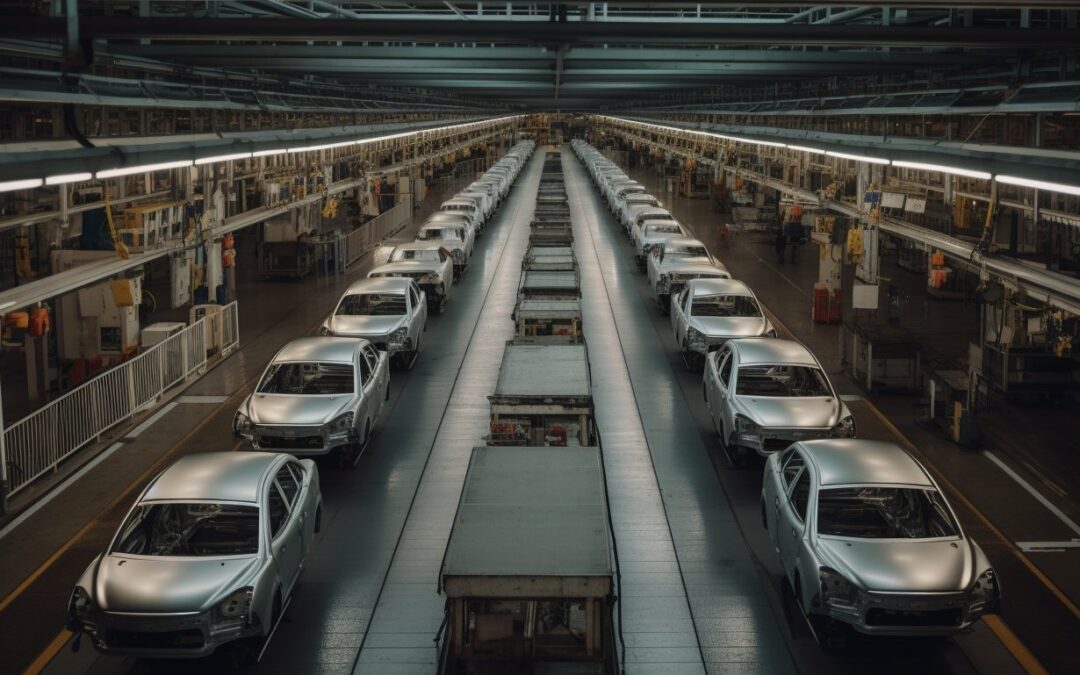Optimization versus sustainability is something that we’ve come face to face within the last three years. W. Edward Deming first brought his theories of manufacturing to Japan after World War Two. Later in the 50s other companies started embracing many of his approaches, including the famous PDCA (Plan, Do, Check, Act) model and others. It’s pretty simple. You plan what you’re going to do, you do it, you check or evaluate it and you make improvements to optimize the system over time and remove waste. It sounds great in theory and most of the time it worked well for almost 70 years.
The automotive industry heavily adopted JIT manufacturing, and during the 1997 fire at the Aisin Seiki plant in Japan, which produced a significant portion of the world’s brake valves, many automakers faced production slowdowns and shutdowns. The reliance on a single-source supplier and the lack of buffer stocks in the supply chain left companies struggling to maintain production.
The earthquake and tsunami that hit Japan in 2011 disrupted the supply chain for various electronic components. Companies like Apple, which relied on just-in-time inventory practices, experienced delays and shortages in the production of iPhones and other devices due to interruptions in the supply of crucial components.
Some pharmaceutical companies adopted lean manufacturing principles, which share similarities with JIT. In cases where the supply chain for essential active pharmaceutical ingredients (APIs) is disrupted, pharmaceutical production can be severely impacted. For example, the global supply chain for certain medications faced challenges during the COVID-19 pandemic, highlighting vulnerabilities in the pharmaceutical industry’s lean practices. In many areas, we have reached a point where there is no more waste to take out of the system. This is why during the pandemic, there were global supply chain issues and processes broke everywhere.
It’s Not Just Physical Things
In finance, when you invest money, large corporations typically also hedge so they will invest money in one direction but they will also have a hedge if things go in the opposite direction. This seems like a waste in the Deming model, but it’s also a buffer against disaster. A few years ago, I worked for one of the larger subprime mortgage companies. The system from a process perspective was almost perfect. It was a model for printing money. The faster we could process mortgages, the faster we could then turn around and resell them. We were making money on both transactions there was a guaranteed buyer for every mortgage we processed. As long as the money kept moving, everything was good. It wasn’t until the money stopped one day and within three weeks the company went from 3 billion in assets to bankruptcy.
We currently have a huge deficit in health care providers and nursing homes. We regularly see practices and whole hospitals fail because they have become economically non-viable because there is no slack in the system. Whether it is providers getting burned out, or nursing homes being unable to process their Medicare claims fast enough to keep up with payroll, the systems are no longer sustainable.
Smart businesses need to start looking at their processes in terms of sustainability and not simply waste. The typical American city has about a four-day food supply. If we’re faced with another pandemic-level event. That’s not enough.
Many of us who have parents or grandparents who lived through the Depression remember things being canned fruits, vegetables you name it. We need to adopt more of those ideas to ensure sustainability.
Flavors of Sustainability
There are lots of ways to look at sustainability and most of them are green. The renewable energy sector, particularly wind and solar power, has demonstrated resilience during supply chain disruptions. These technologies often involve decentralized manufacturing and utilize a diverse set of materials, reducing dependence on a single source. This diversification, coupled with sustainable practices, has contributed to the sector’s ability to withstand interruptions more effectively.
Agriculture is another key area of sustainability. Amidst the disruptions caused by the COVID-19 pandemic, some localized and sustainable agriculture practices proved more resilient than large-scale industrial farming. Local farmers who adopted sustainable and regenerative agriculture practices, such as community-supported agriculture (CSA) models, were better equipped to navigate supply chain challenges and continued to supply fresh produce to their communities.
Water is another area that gets a lot of attention. Sustainable water management practices in manufacturing, such as recycling and reusing water, not only contribute to environmental conservation but also enhance resilience during water supply disruptions. Companies that prioritize water efficiency are better equipped to handle interruptions in the availability of freshwater resources.
Beyond the obvious environmental example, the idea of sustainability gets a little harder to see. What makes a sustainable business or a sustainable community? It means taking that canning example from your grandparents and ensuring you have a hedge against whatever might put you at risk. For many organizations, this is called insurance, and many companies don’t have what they need. That’s assuming they could get the coverage in the first place.
Taking Steps
Sustainability means you can stand fluctuations in weather, economy, population, etc. People are good at telling themselves, “That will never happen to me or my company”. That is until the hurricane, diagnosis, cyberattack or pandemic proves them wrong.
Companies embracing circular economy principles design their processes to minimize waste and prioritize the reuse and recycling of materials. By creating closed-loop systems, these businesses are inherently more resilient to supply chain disruptions. For example, companies that use recycled materials in their production processes are less affected by interruptions in the supply of virgin materials.
Building resilience through diverse and localized sourcing is a sustainable practice that helps mitigate risks during supply chain interruptions. By avoiding over-reliance on a single supplier or geographic region, companies can adapt more easily to disruptions and maintain continuity in their operations. It’s still too soon to tell, but 3D printing is likely to become a game changer in supply chain resilience.
Towns need to realize companies are probably not going to be bringing workers to their towns. They need to market themselves to remote workers and show off their culture, history, and natural beauty. They also need to make sure older adults can stay in their homes longer with automation and high-speed internet access.
Every situation is different. Look around at yours. It may be your business, your community, or your life. Sustainability takes many forms. Optimization may win you brownie points and maybe a bonus. But sustainability may save your company, your community, or even your planet.



